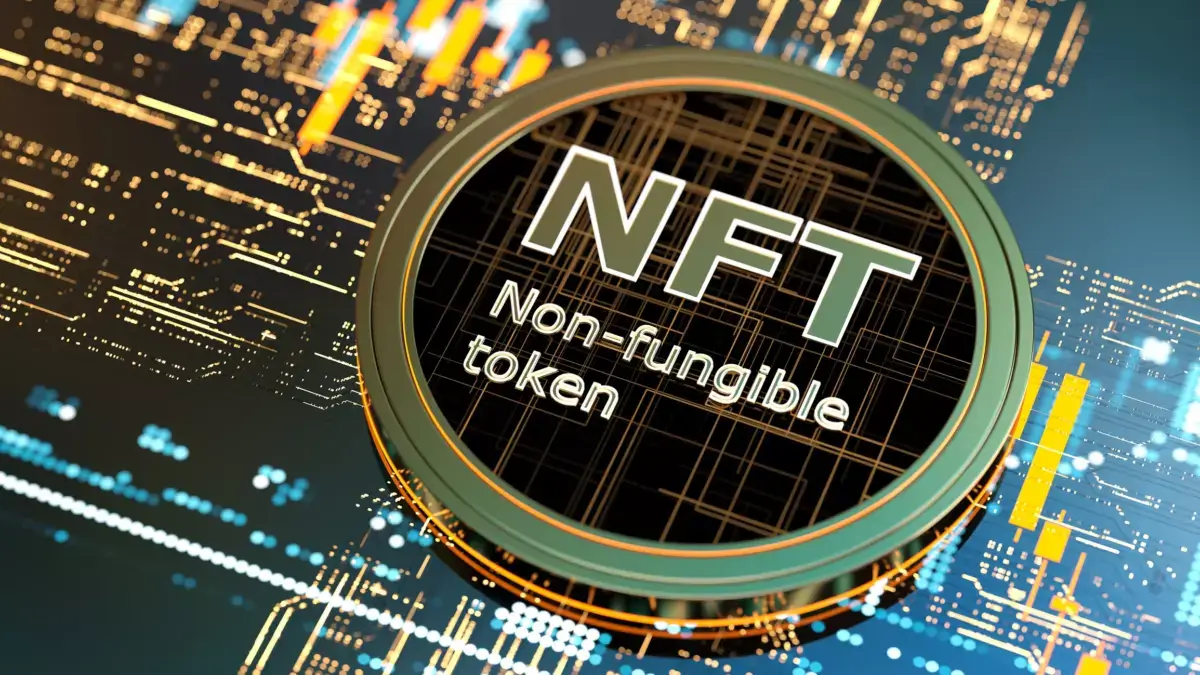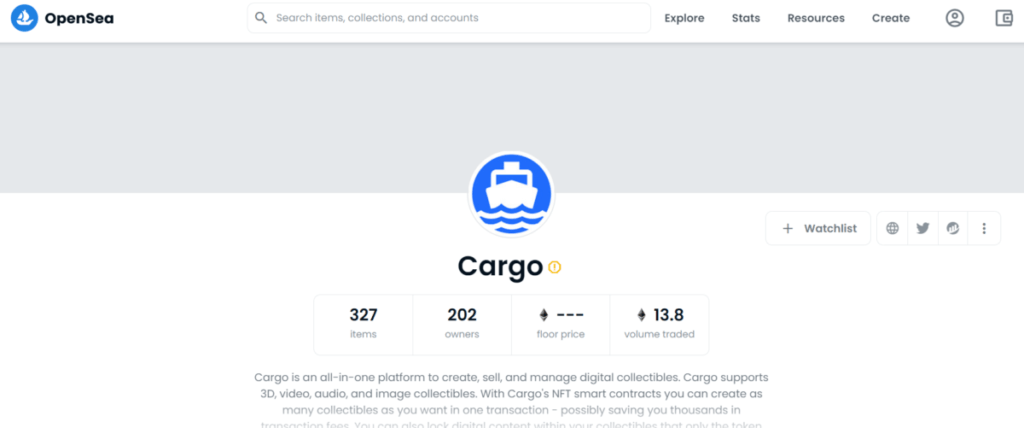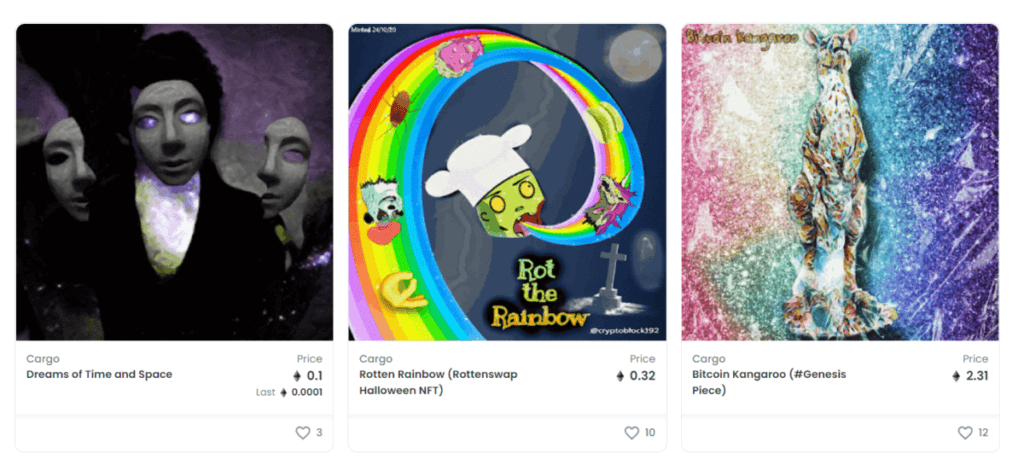
What is Cargo NFT?
Many people have a least some knowledge about non-fungible tokens (NFTs), but do you know what Cargo NFT is. It is a multi-chain non-fungible (NFT) management platform. This means you can create, store, sell as well as buy digital collectibles from Ethereum, xDao, Matic, etc. So, you have the opportunity to develop, manage, and sell, thanks to Cargo NFT.
Cargo NFT management platform distinguishes itself from other similar platforms by offering the ability to mint in one place as well as distribute the NFTs to a range of platforms.
Part of the problem with non-fungible tokens is the technical barrier to entry. People typically need to understand blockchain platforms in order to mint NFTs as well as sell them. Cargo NFT simplifies this by providing all the tools necessary to buy, collect, create, sell and profit from NFTs. Hence, users can create, manage, and sell NFTs on Cargo.
But before discussing Cargo NFT’s management platform, it is desirable to take a look at NFTs. They are digital representations of real-world assets. It is worth noting that such assets can be physical or digital. The actual tokens are cryptographic entities that can’t be duplicated.
Non-fungible tokens can be stored on various blockchains, including xDao, Ethereum as well as Matic. It is possible to create, share, or buy NFTs through different online platforms such as Cargo. While they can exist on dozens of different blockchain platforms, Cargo decided to focus on the most popular and widely used blockchain, Ethereum.
Most expensive NFTs

People are willing to pay a lot of money for NFTs. For example, whistleblower Edward Snowden’s face made from pages of the court’s decision was turned into an NFT titled Stay Free that sold for $5.4 million in April 2021, making it one of the most expensive NFTs sold in 2021.
An NFT piece was minted several years ago by XCOPY sold in November of 2021 for $6 million on SuperRare. Its new owner paid 1330 ETH for “A Coin for the Ferryman.” XCOPY’s work mentioned above is among the earliest pieces made by one of the most famous crypto artists.
XCOPY’s works, disturbing and distorted visual loops, explore the topics of death, apathy, and dystopia, as well as ironically refer to the current state of the art and social media through titles such as “This is Clearly Money Laundering.”
Cargo NFT and its history

Launched in 2020, the platform represented several years of Sean Papanikolas’ research and experimentation within the Ethereum ecosystem. Moreover, Cargo launched its own NFT marketplace in 2020. For people who would like to learn more about its marketplace, all they need to do is find the information on “Cargo NFT marketplace” or simply “NFT Cargo.”
We should not forget that Cargo’s founder helped to pioneer scalable minting technology on the Ethereum blockchain.
Let’s get back to Cargo. Users have the ability to manage NFTs that are compatible with the platform if they haven’t been created on Cargo NFT. This means that it can hook into users’ existing wallets and give a user the ability to manage any of the NFTs they may have created elsewhere.
Cargo has a free tier with limited storage and a number of projects supported. For less than $20 per month, more precisely for $19.99, users can upgrade their tier to get support for several projects (up to 5 projects) as well as 10,000 NFTs per project.
Moreover, it has a “showcase” feature where you can organize and display a gallery of your digital collectibles. You can create a “showcase” feature free of charge.
Let’s check out other exciting features of the Cargo NFT.
- Content manager – Importantly, the content manager is a wizard for managing content tied to your non-fungible tokens.
- Multi-wallet support – MetaMask allows wallets from various blockchains to be linked to your Cargo account.
- We should also mention the Gem rewards program. It is an NFT farming protocol. People may stake their gems in order to receive rewards in the form of more gains.
- Developer tools – The platform provides an NFT infrastructure that dApp developers can use to link their projects to the platform.
Can I buy and sell NFTs on Cargo?

Sure, you can. As stated above, you have the opportunity to buy NFTs on Cargo. You will need to top up your wallet beforehand with a cryptocurrency such as MATIC or ETH.
When you purchase a non-fungible token, you store it in your Cargo account. Therefore, all the tools you need in your NFT ownership journey are in one place.
To buy NFTs on the platform, click on “Browse the Marketplace .”Another page opens that displays digital collectibles from the community. People can choose to display collectibles from either Ethereum, Matic, or xDai.
Users need to click on a collectible’s thumbnail to view details or purchase it. To buy an NFT, they either need to have funds inside a Cargo account or cryptocurrency within a custodial wallet such as MetaMask.
Users can sell NFTs on Cargo NFT as well. The platform allows users to sell NFT using its project management tools. People who use the platform can view your showcase and make orders directly from your portfolio. Hopefully, there is an order management tool on the Dashboard to help you handle the flow of business.
Important details regarding the platform
Probably many people would like to ask several questions about the platform, such as: Can I mint NFTs on Cargo, what is the NFT showcase, or how does Cargo help me manage my NFTs.
Let’s start with the first question. Yes, users can use its Magic Minting feature to instantly create non-fungible tokens, and there is no need to pay Ethereum gas fees or send a transaction to the Ethereum network. Magic minted tokens are stored in your Cargo account, which is basically a custodial wallet. Want to gather more information type “Cargo NFT minting” in Google Search.
Nevertheless, users can send these NFTs to any Ethereum wallet they choose or add them to the marketplace in the view of potential buyers. Furthermore, when you sell minted NFTs, your Cargo account will be automatically credited.
What is the NFT showcase? It is a gallery of your digital collectibles. The NFT showcase allows potential NFT buyers to browse your collection, increasing your chances of selling an NFT from your personal collection.
It includes a title for the collection, a description, and a cover image. Users need an account on Cargo to create a showcase.
Another important question is: How does Cargo help me manage my NFTs?
The Cargo Dashboard offers creators as well as vendors an excellent tool for managing their digital collectibles. NFT creation on the platform is a simple process, thanks to the platform’s NFT creation wizard. Non-fungible tokens are organized as projects on Cargo.
Its project creation wizard reduces project management headaches as it allows users to create projects by providing basic details as well as leaving the platform to handle the technical aspects. There is an order management tool on the Cargo Dashboard to help you with handling the flow of business.
If you are a developer, the platform allows you to manage your NFT portfolio by linking your website with Cargo.
Cargo and its tokens

The platform has tokens: Cargo Gems and Cargo Credits. As a reminder, Gems are utility and governance tokens.
Cargo plans to make Gems a payment option in the future. At the moment, users can buy Cargo on the site. Nevertheless, on decentralized exchanges, you can get them for the going market rate.
The platform also features Cargo credits. Notably, these are ERC-20 tokens based on Ethereum that allow you to swap and begin creating collectibles. One credit enables a user to create one collectible. For example, 200 credits will enable you to create up to 200 collectibles.
Just signing up on the platform is a ticket to one credit. If you want to purchase more credit packs, navigate to the Dashboard and click on “Buy more.” Moreover, users can send their credit to other Ethereum addresses and sell as well as trade them for other types of assets.
How to create NFTs on the platform
You have the ability to create NFTs on the platform using either the Free Tier or the Pro Tier plans. When it comes to the Free Tier, you can create one project containing 10,000 NFTs. In Pro Tier’s case, the situation is quite interesting.
The Pro Tier gives you access to up to 5 projects that can contain up to 10,000 NFTs per project. But if you want to use the Pro Tier, you must pay. It costs $19.99 per month to use the Pro Tier.
Don’t worry – it is pretty easy to create NFTs on the platform. You need to click on the “Start Creating” button. This takes you to the Cargo Dashboard, where you can choose to create an xDao, Ethereum, or Matic project.
Users have the ability to switch between networks using MetaMask to create a project on any of the currently supported chains. On this page, people can either create a new project or create a showcase. As stated above, a showcase is a portfolio of your NFTs consisting of the showcase name, description, and banner image.

